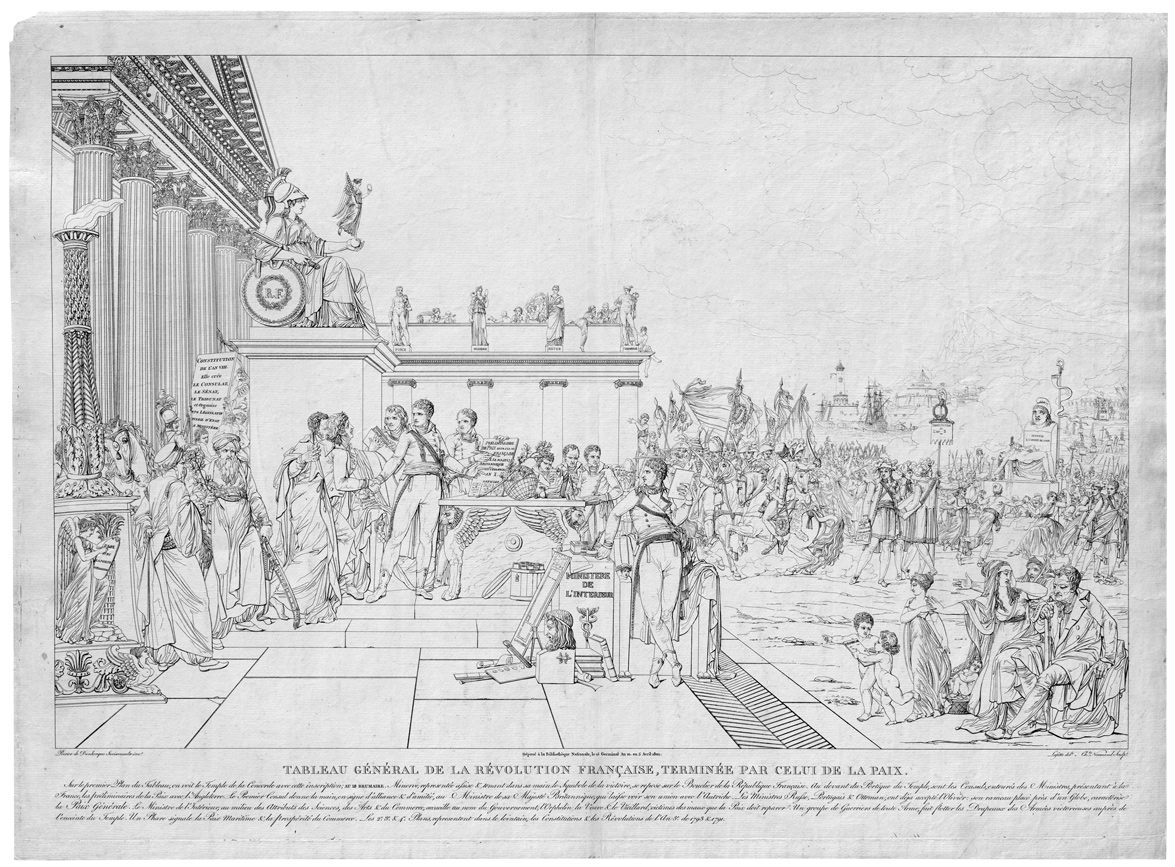Loading the page ...
Charles Pierre Joseph Normand
(1765 Goyencourt – 1840 Paris)
Tableau général de la Revolution Française, terminée par celui de la Paix. Etching and engraving. 49.8 x 68 cm. 1802. Not in Nagler or Le Blanc.
The architect, draughtsman and engraver, Charles Normand, is the author of this unusual large-sized etching, which was intended to glorify the political objectives of the French Republic and was designed primarily for propaganda purposes. The auctor intellectualis of the composition was Louis-Eugène Poirier, a lawyer from Dunkirk, who was a political prisoner in Arras during the Reign of Terror and published his personal experiences in several pamphlets. The painter and draughtsman, Louis Lafitte (1770–1828) prepared a preliminary drawing based on Poirier’s ideas which Normand then transferred to the medium of engraving. In 1801 Poirier published an invitation to subscribe, on which the present ‘gravure au trait’ was offered in individual, hand-coloured designs, responsibility for which rested with Lafitte. However, just one coloured print of this outline engraving is known to exist (Bibliothèque Nationale de France, Paris), which suggests that the outcome of the subscription did not match expectations.
Unfolding in epic breadth is a very varied propagandistic Tableau vivant vividly depicting the benefits and blessings of the Republic. Standing in front of the Temple of Unity and a statue of Minerva, the First Consul Napoleon Bonaparte and his retinue receive the peace envoys from Great Britain, Austria, Russia and the Ottoman Empire. Standing in casual pose to his right is the Minister of the Interior surrounded by attributes of the arts and sciences. They include, among other things, a ground plan of the Louvre, which had been declared a public museum by decree of the National Assembly just under a decade previously. In the name of the Revolution the minister receives an orphan, a widow and a needy old man, whose lot will soon be improved by the peace agreement with the great European powers. The whole is treated in a purist, linear idiom which reveals Normand’s training as an architect. The classical architecture and the monumental candelabra in the left foreground are greatly influenced by the example of the architects Percier and Fontaine, whose decoration designs Normand had duplicated in reproductive engravings. A superb, contrasting impression with the margins. Minor defects in the margins, slight ageing, otherwise in perfect condition.
